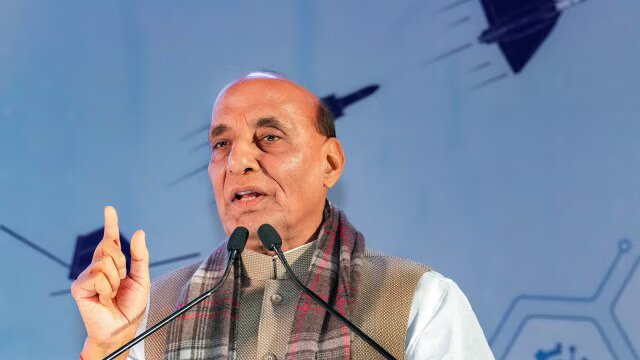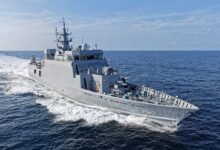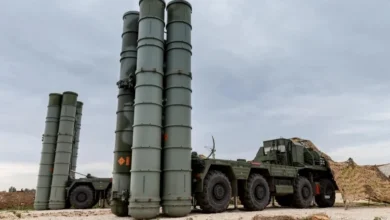India Asserts No Hegemony In Indian Ocean Region: Rajnath Singh

- The Indian Navy helps all merchant ships go back and forth between the Red Sea and the Indian Ocean.
- This shows how conflict in one part of the world can spread to another part, as well as how asymmetric forces can work together.
Rajnath Singh, the defense minister, said on Tuesday that the Indian Navy is making sure that no country with its huge economic and military power can take control of friendly countries in the Indian Ocean Region (IOR) or threaten their rights.
The defense minister stressed that India is doing what it needs to do in the Indian Ocean Region by helping the countries on the coast.
“We have made sure that the rules-based maritime order is strengthened in the Indian Ocean Region.” India is making sure that all of its Indian Ocean neighbors get the help they need to protect their independence and freedom. “We have made sure that no one has power in the area,” Singh said at a ceremony in Goa to officially open the new Administrative and Training building at the Naval War College (NWC).
The minister also talked about the change in how to deal with the danger perception. “In the past, most governments focused on making their land borders stronger, but threats from the sea were not given as much attention.” “Because our enemies were moving around more in the Indian Ocean Region (IOR) and because the region is important for business, we had to re-evaluate our threat perception and re-balance our military resources and strategic attention,” he said, adding that India had not only rethought its role in the IOR but also made it stronger. “Because of these efforts, India has become the go-to first responder and security partner in the IOR,” he said.
Admiral R. Hari Kumar, Chief of Naval Staff, said that the actions in the Red Sea were a result of the conflict between Israel and Hamas. He said that the Houthis were using drones and missiles to attack merchant ships from Israel, the US, or the UK in the Red Sea.
“The Indian Navy helps all merchant ships go back and forth between the Red Sea and the Indian Ocean.” We are mostly looking at ships with the Indian flag, but we will help any ship that asks.
“This shows how conflict in one part of the world can spread to another part, as well as how asymmetric forces can work together.” It’s easy to see that the difference between the costs of attack and defense is not equal because things like drones is usually very cheap. “Maybe a few lakh, twenty to twenty-five lakh, but a missile to shoot it down this branch would cost crores,” he said.







Facebook Comments